Off Piste: A Ride Across America, Part 3 of 5
Lightweight tents and a handmade Swedish hatchet; a look at the essential camp gear used on our 3,700 mile motorcycle trip
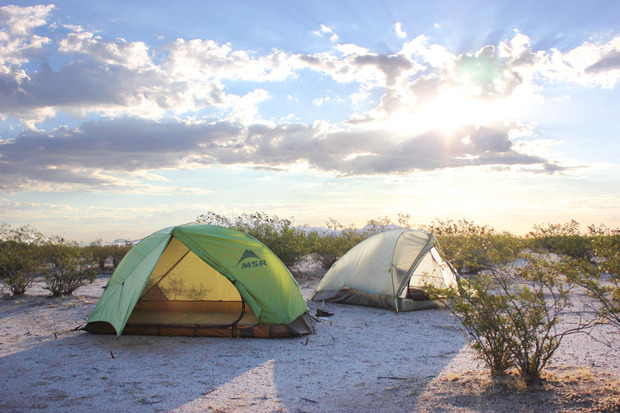
As we continue on with the week-long coverage of our recent cross-country motorcycle trip, we introduce a wealth of camping gear used during the 10-day journey. When not riding—or looking in the mirror to ensure we had that “motorcycle guy” look just right—a good majority of our down-time was spent learning the methodical processes of setting up and breaking down camp. Due to the uniqueness of traveling by bike, we selected a wide range of gear to test—from ultra lightweight backpacking tents to weekend warrior cots. The following are the standouts from over a week’s worth of days and nights in the dirt. Be sure to check back on Part 1 and Part 2, and keep an eye on CH for camp cooking essentials coming later this week.
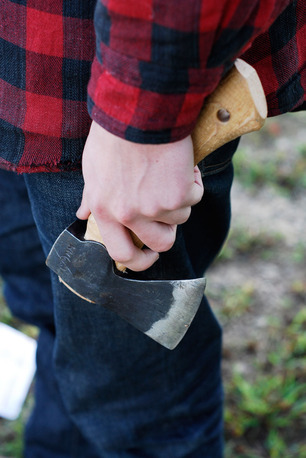
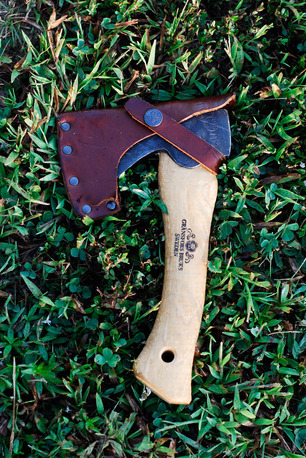
Gränsfors Bruk Hand Hatchet
Arguably the most useful tool on the trip, the stout Hand Hatchet from Swedish axe makers Gränsfors Bruk came in handy for everything from hammering tent stakes to chopping campfire wood. The century-old company is a Scandinavian staple that makes each product by hand from carving the handle, to finishing the blade with hair-splitting sharpness. At under 10″ in length, the Hand Hatchet made a perfect companion, fitting nicely into the nooks while packing—made safe by the leather sleeve. Find it from Gränsfors Bruk’s North American importer Westerlind Outdoor.

MSR Carbon Reflex 1 Ultralight Tent
A traditional rectangular form with high-tech materials, the Carbon Reflex 1 Ultralight Tent from MSR was the perfect companion. Weighing under three pounds and packing down to just 20″ in length, the single-person tent still managed to offer enough room to roll around and change in—as well being easy to climb in and out. Once extended, the rainfly created a nice covered staging area that kept boots and helmets dry and away from morning dew. And, because MSR is a Cascade Designs brand, the footprint of the Carbon Reflex 1 was the exact size as the Therm-a-Rest LuxuryLite Cot (also made by Cascade Designs). Find more from MSR online.
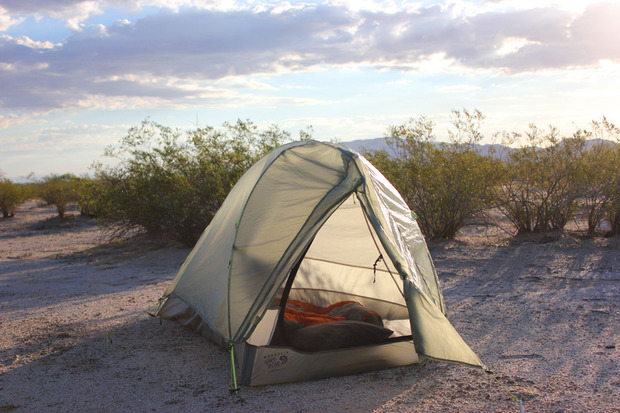
Mountain Hardwear SuperMega UL 1 Tent
Designed for the ultralight backpacker, the SuperMega UL 1 Tent is smaller and more compact than the MSR tent design. Mountain Hardwear’s single-person tent takes a more tubular form, raised where your head is and hardly anywhere else. While the slim shape made for rather awkward entry and egress, the reduction in size and weight is worth it. Packing and pitching was extremely easy, as a single collapsable aluminum rod makes up the entire exoskeleton. Visit Mountain Hardwear for extra specs.
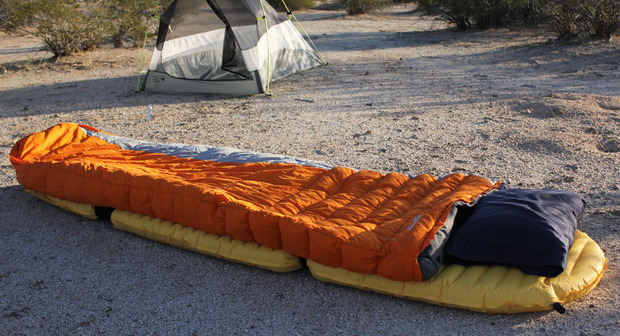
Therm-a-Rest Navis Down Sleeping Bag
We had the idea to test unconventional sleeping bags during the trip; opting for ones with more of a sleeve shape than mummy. This proved an unfortunate decision after hitting some unexpected cold patches in the NE, but came in handy in the South. New from Therm-a-Rest is the Navis Down Sleeping Bag, a bag that’s designed to be used in conjunction with a down coat—which we didn’t have. However, all faults here were our own, so to speak directly about the bag; it certainly did its job. The most impressive design element was the elastic back-straps, which create a secure attachment point for your air mattress. By joining them together, you’re guaranteed to stay comfortable even when sleeping on sloping surfaces—a common mishap when setting up camp in the dark.
Therm-a-Rest NeoAir XLite Mattress
Top of the line from Therm-a-Rest, the new NeoAir XLite air mattress was a dream. Packing down to just 9″ x 4″ and weighing just 12 oz, this backcountry mattress was fought over nightly. When paired with the Navis Down sleeping bag, the combination was the best. Extremely lightweight, durable and easily inflatable; the NeoAir XLite is really the pinnacle of lightweight backcountry pads.
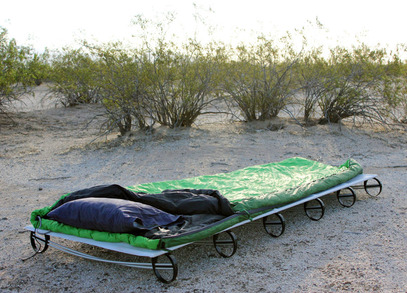

Mountain Hardwear Down Flip 35/50
Similar to the Navis Down Bag, the Down Flip 35/50 from Mountain Hardwear avoids the conventional mummy shape in favor of a more roomy silhouette. The multicolored sides indicate the rated temperature—for cold weather, sleep with the 35 degree up; and when the temps rise, rotate the bag to expose the 50 degree rated side. We appreciate the idea (which, in theory, is brilliant) but if you happen to be someone who rolls around in their sleep, it can deliver less than impressive results. Still, with 600 down fill, the bag was enough to battle most of the country’s elements. See Mountain Hardwear for exact instructions.
Therm-a-Rest LuxuryLite Mesh Cot
We first spotted an iteration of the innovative mesh cot in early 2012 as the work of some independent designers on Kickstarter. The design has since been acquired by Seattle’s Cascade Designs and improved upon to reach its current shape, the LuxuryLite Mesh Cot. A lightweight, breathable ripstop fabric creates the sleeping surface, while a series of interlocking rods keeps you comfortably off the ground—torsional tension keeps the cot structure secure. Set up can take a bit of time and the white mesh is quick to get dirty, but the sleeping experience is unlike any we’ve ever experienced in the outdoors. If you can manage the weight (4lbs) and pack size (16″ x 6″) then we definitely recommend it. Visit Therm-a-Rest online for more.
Images by Hunter Hess and Graham Hiemstra. See more of our camp gear in the slideshow, and check back on parts one and two to see the motorcycles and riding gear we used.
Off Piste encourages exploration. With each feature we’ll introduce the people, products and places that make life outside the city possible and life in the city more down to earth.





















